Hike or bike the scenic towpath of the C&O Canal National Historical Park.
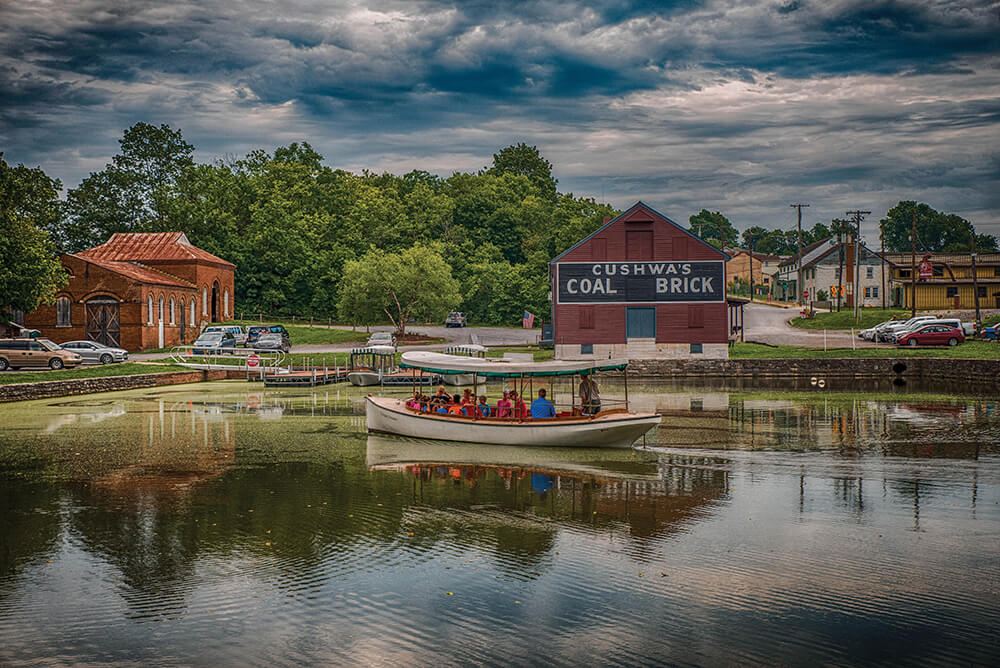
Looking for a scenic trail excursion with lots of history and plenty of town amenities? Consider the C&O Canal National Historical Park: 185 miles along the famous 19th-century canal between Washington, D.C., and Cumberland, Maryland. Two-thirds of the linear park skirts West Virginia’s northeastern border—between Harpers Ferry, at canal mile 61, and Cumberland, not far from Keyser, at mile 184.5—so a visit to the park is an exploration of our state’s natural and cultural history.
“There’s literally something for everyone to enjoy,” says Charissa Hipp, spokesperson for National Park Service nonprofit partner C&O Canal Trust. “Whether it’s biking, running, or just taking a walk and enjoying nature—you’ll see birders out there, and we often see photographers.”
Encompassing more than 100 rare and threatened species, some 1,000 historic structures, and a rich history, the park passes through 10 designated Canal Towns that welcome park visitors. It’s popular not only with hikers and bikers, but paddlers, too, who enjoy watered sections of the canal as well as the adjacent Potomac River.
A waterway to the west
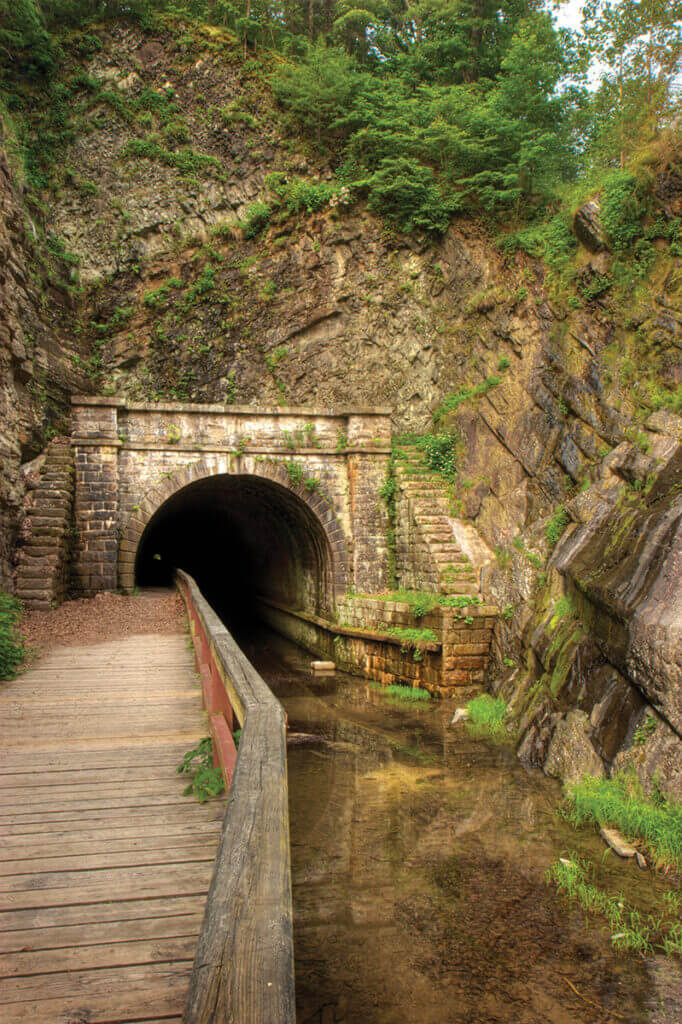
For early America, the Appalachian Mountains posed a formidable barrier to westward expansion and to east–west transportation and trade. The Potomac River could have provided an ideal path west from the ports of the Chesapeake Bay, if it weren’t for the falls on the river and the unreliable flow. The Chesapeake and Ohio Canal was built to remedy that. Opened in sections from 1828 to 1850, the canal ultimately required 74 locks to stair-step the 605 feet of elevation change and provide a reliable still-water corridor between Georgetown, at Washington, D.C., and Cumberland.
The C&O canal became a backbone of the region’s economy. Mule-drawn cargo boats transported coal out of the mountains as well as lumber, wheat, corn, oats, flour, pork, and other rural commodities. Hauled back up from the east were bricks and plaster, salted fish, oysters, and more. Passengers and mail made the trip, too.
The canal eventually succumbed to competition from the B&O Railroad and shut down in 1924, having anchored communities, provided livelihoods, and served as a colorful transportation corridor for nearly a century. Congress named the property a national historical park (NHP) in 1971—it celebrated 50 years in the National Park Service in 2021.
Hiking, biking, boating, and paddling
The C&O Canal NHP has six National Park Service visitor centers and many less developed trailheads. As in the canal’s heyday, points of interest are located by their canal miles from the eastern endpoint at Georgetown.
The gently graded canal towpath makes for pleasant hiking and biking of any distance—day-trips are common, and thru-riders can go end-to-end in several days. Great places to start an excursion, take a break, or stay the night are the Canal Towns along the way. Discover unique shops and restaurants in places like Hancock, Maryland, or Shepherdstown, West Virginia. Find a campground or B&B in Paw Paw, West Virginia, or Brunswick, Maryland. Each of the 10 Canal Towns offers its own mix of services, history, and charm. And for an immersive experience, you can spend a night in any of seven refurbished lockhouses, or Canal Quarters, with accommodations ranging from rustic to full amenities.
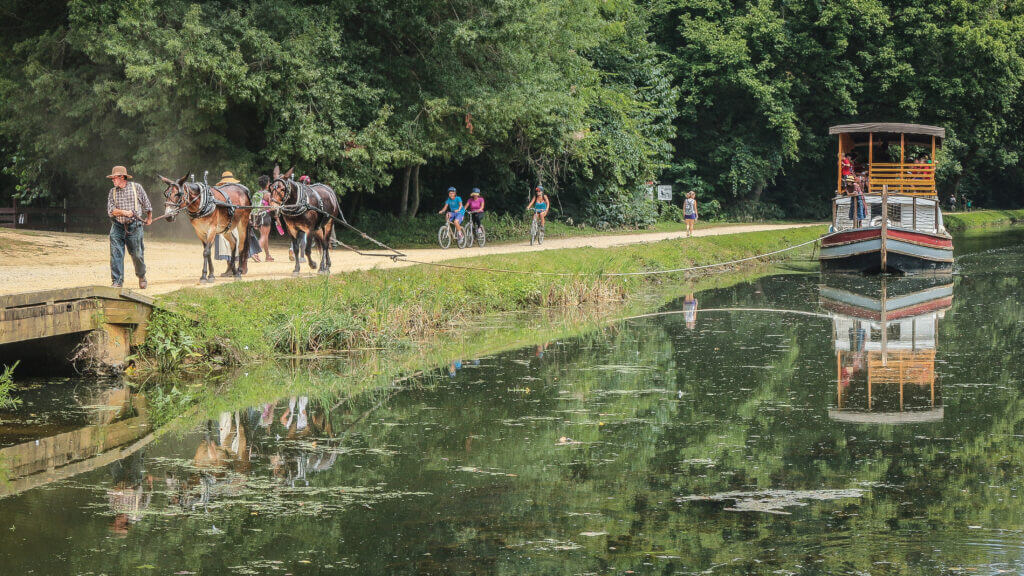
Canal Towns
Poolesville, Maryland, miles 30.9 and 35.5
Point of Rocks, Maryland, mile 48.2
Brunswick, Maryland, mile 55
Harpers Ferry, West Virginia, mile 60.7
Bolivar, West Virginia, mile 60.7
Shepherdstown, West Virginia, mile 72.8
Williamsport, Maryland, mile 99.4
Hancock, Maryland, mile 124.1
Paw Paw, West Virginia, mile 156.1
Cumberland, Maryland, mile 184.5
Of course, when we hear “canal,” we think “water.” While nature works against the out-of-use canal over time, the National Park Service keeps some of the “levels”—as the stretches between locks were called—watered and navigable. In addition, visitors can take historic boat rides on the canal at two places. The Great Falls Tavern Visitor Center, at mile 14.3, offers mule-drawn rides on the replica 1870s packet boat the Charles F. Mercer, and park rangers in period clothing describe what life was like for the people who lived and worked on the canal in the 1800s. And at the Williamsport Visitor Center, at mile 99.8, visitors can ride a 1920s electric launch boat. Paddlers can also access the Potomac: The park service website maps canoe/kayak and boat ramps available throughout the park.
For highlights, Hipp recommends the Great Falls Tavern Visitor Center in the eastern section, for the falls on the Potomac, interesting wildlife, mule-drawn boat rides, and a network of hiking trails. In the central section, she suggests the Williamsport Visitor Center for its many historical canal features in one place. And, in the west, she names the landmark 3/5-mile Paw Paw Tunnel at mile 155 that shaved five miles off the canal’s route but nearly bankrupted the C&O Canal Company.
C&O on the go
Plan your trip in advance and make decisions on the fly with the C&O Canal Explorer mobile app. Offered by the C&O Canal Trust, the searchable app maps 800 points of interest including trailheads, restaurants, campgrounds, inns, and more, and provides GPS-powered distance and time calculations and an itinerary builder.

READ MORE ARTICLES FROM WV LIVING’S SUMMER 2022 ISSUE


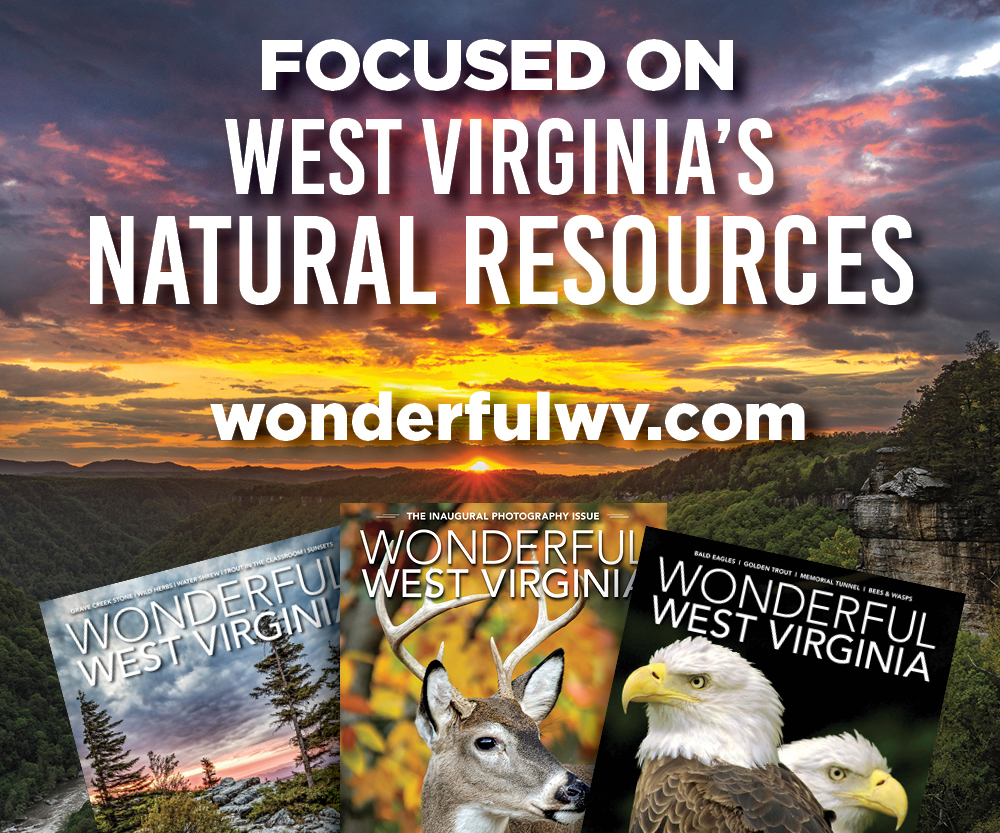
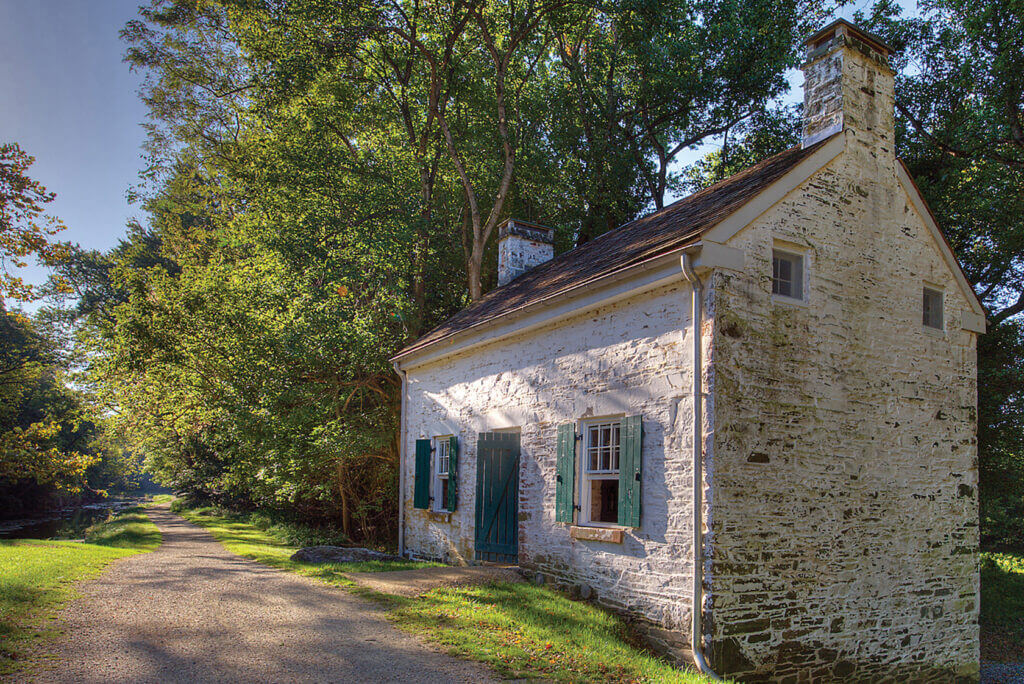








Leave a Reply